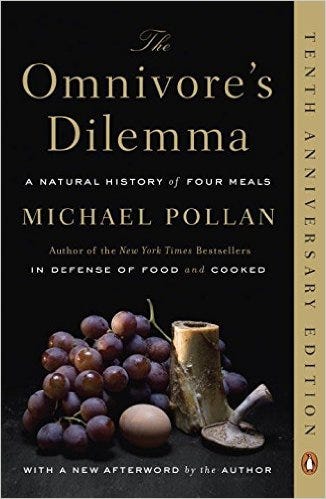Learn where to obtain a healthier, more ethical and sustainable food supply

In the hunter-gatherer era, the nutrition of our ancestors was pretty much defined by their environment. But in our modern interconnected the world, where a product is shipped across the world, there are a plethora of choices available. This is known as the omnivore’s dilemma. We have to choose among countless options every time we go to a supermarket.
Industrial agriculture produces cheap food, but with high environmental and ethical costs
There was a time where all food was produced on local farms. But nowadays local, seasonal food is not enough to feed the world. Modern agriculture optimizes production in every area. Industrial agriculture may produce out-off-season foods and cheap meat, but it comes at a big cost. Chemicals in the air, ground, water and our food, and the unethical treatment of animals spread diseases and present a big problem.
The problem of too much corn
Due to government subsidies which maintain the price of corn artificially high, essentially undoing the economy of supply-demand, there is too much corn on the market.
The excess of corn has to get rid of somehow, which is why the industry comes up with a wide variety of so-called wet mills. In wet mills, corn is repurposed to create “high fructose corn syrup,” “hydrogenated fat” and other fancy sounding synthetic ingredients. These ingredients are then used in foods like soda, breakfast cereals, TV dinners and so forth.
Monolithic mass-feeding operations
Another more cruel way of converting excessive corn into other products are animals. For the food industry, animals are like machines which turn excess corn into meat. These factories are called CAFO’s (Concentrated Animal Feeding Operations).
In CAFO’s, animals are raised for efficiency and profit, cramming them into small cages while automatizing feeding and pretty much the whole farm.
Animals suffer due to crowded spaces without access to pasture and space to move around, as well as diseases which spread in those environments.
Corn is so cheap that it is used as food for animals who didn’t even evolve to eat corn. One such example is the carnivorous salmon which is being reengineered to tolerate corn.
Not even cattle evolved to eat corn which is why in CAFO’s they suffer all kinds of diseases. Some of those illnesses are heartburn so severe that it causes ulcers, liver disease, a weakened immune system and bloat so intense that it can suffocate a cow by pressing its lungs.
To keep animals alive they are pumped full of antibiotics, which leads to antibiotic-resistant superbugs which can wreak havoc in human populations too.
Animal suffering and superbugs are not all, though, hormones and heavy chemicals are filtered to downstream waters and fertilizers produced from the animals often spread lethal E. coli bacterias.
Organic food
The organic food movement was started to reduce distribution costs as well as to solve a lot of the problems caused by industrial culture. Instead of shipping their products across the country farmers started selling their products on the side of the roads. They also often used local compost instead of chemical pesticides and fertilizer.
Studies have shown that organic products contain more vitamins and cancer-fighting polyphenols than conventional foods which make them healthier. They also have a better taste when they grow at their natural pace. Tomatoes, for instance, develop a thicker wall which gives them more concentrated flavors.
Many problems of industrial agriculture persist on organic farms
As organic couldn’t keep up with the increasing demand, the organic movement brought with it. They started expanded, sacrificing many of their original ideals.
Big corporations exerted pressure to reduce the standards for organic food, so that they could still use the label “organic” on their products, tricking people to pay more through images of happy cows on green grass.
Most organic food in supermarkets comes from big farms, not the original small farms, although they still exist. Small farms are more bound to seasons and food they can grow locally which makes them less attractive for supermarkets needs for year-round availability of great variety.
Management-intensive grazing, the best alternative
The so-called management-intensive grazing is a technique where animals are moved to different pastures every day to produce optimum grass growth using the plant’s natural growth cycle.
This technique is one of the best ways to optimize production while maintaining sustainability. The method makes use of the coevolutionary relationship between cows and grass, something that is completely ignored in industrial agriculture.
Cows eat their favorite grass instead of harmful corn which makes them healthier and thus results in healthier meat. Gras also has a positive environmental impact as it absorbs thousands of pounds of carbon out of the atmosphere.
Local farms are a good ethical, environmental and economical alternative to industrialized agriculture. They don’t compromise ethical concerns, health and sustainability over profits.
It is better for our health, the environment, as well as animals, to buy from small local farms instead of industrial ones.
